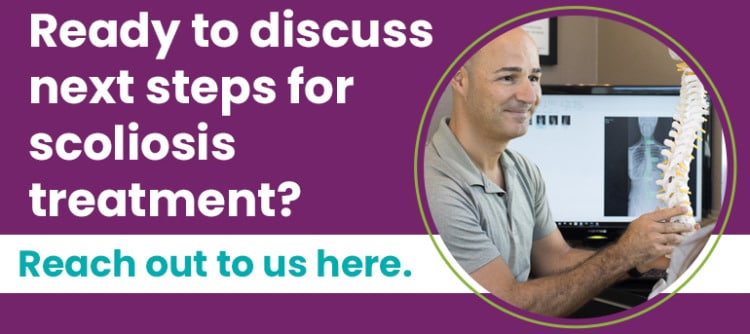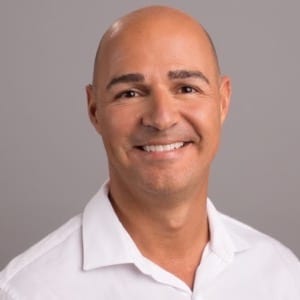Recognizing Scoliosis Symptoms: What to Look For
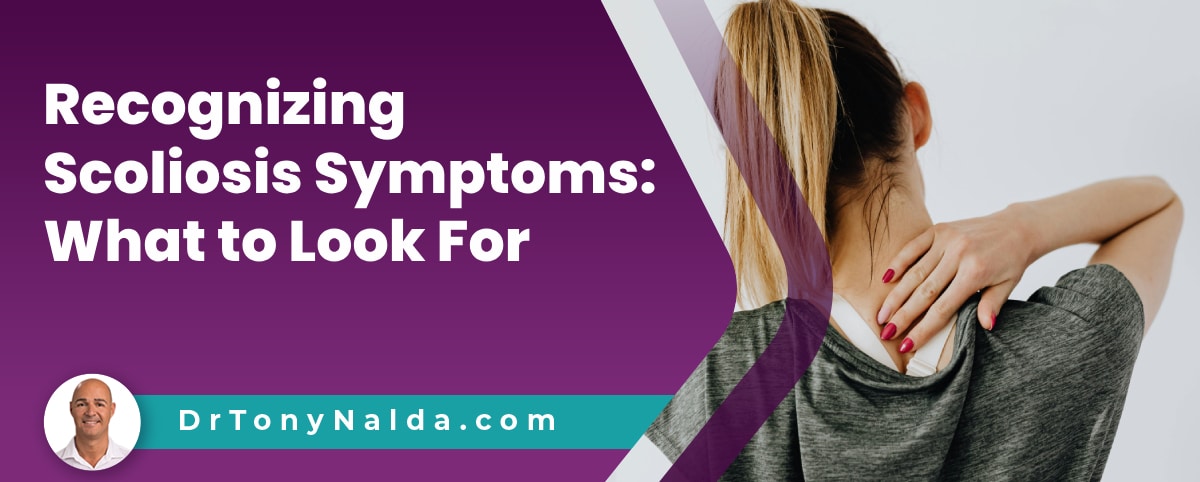
Recognizing early scoliosis symptoms can lead to early diagnosis and intervention, and while there are never treatment guarantees, there is a strong connection between success and when treatment is started.
Early stages of scoliosis show subtle signs, and having an awareness of the condition's earliest telltale signs can lead to assessment, diagnosis, and treatment started early in a condition's progressive line. As a progressive condition, the nature of scoliosis is to get worse over time.
There are different types of scoliosis and age groups affected. When it comes to childhood scoliosis, early intervention is particularly important.
Table of Contents
Scoliosis is Progressive
Scoliosis is a highly-prevalent condition, and as the leading spinal condition among school-aged children, it should always be taken seriously, which is why some schools conduct routine screening exams.
As scoliosis screening in schools is becoming less routine, it's important for parents and caregivers to be aware of the condition's early telltale signs.
Scoliosis is a progressive condition, meaning its nature is to become more severe over time, and it's growth that triggers progression.
Scoliosis progression means the size and rotation of the unnatural spinal curve is increasing, and as this occurs, the condition's effects become more noticeable.
What's most important to understand about scoliosis symptoms is that what a patient is experiencing at the time of diagnosis doesn't mean that's where the condition will stay; only proactive treatment can work towards counteracting the condition's progressive nature.
Without treatment, even cases initially diagnosed as mild scoliosis can progress and become moderate scoliosis, severe, and very-severe scoliosis, and if left untreated, complications can develop and surgery can be necessary.
As scoliosis progresses, the spine becomes increasingly rigid, making it less responsive to treatment, hence the benefit of a treatment approach that's proactive and started immediately following a diagnosis.
As a progressive condition, scoliosis isn't curable, so treatment is about how best to manage an ongoing condition for the best quality of life, and scoliosis can be highly treatable.
The best way to minimize the symptoms of scoliosis is to treat it proactively, and scoliosis symptoms also differ between children and adults.
Scoliosis Symptoms in Children
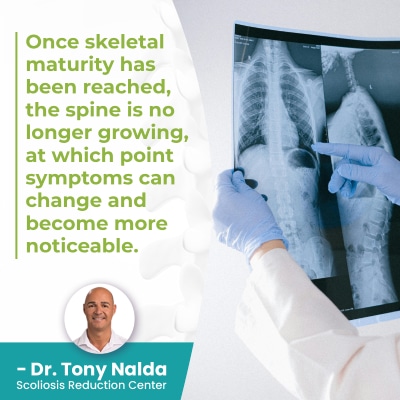 Children are more commonly diagnosed than adults, and children of all ages can be affected from babies born with congenital scoliosis to infantile idiopathic scoliosis, early onset juvenile idiopathic scoliosis, and adolescent idiopathic scoliosis (AIS).
Children are more commonly diagnosed than adults, and children of all ages can be affected from babies born with congenital scoliosis to infantile idiopathic scoliosis, early onset juvenile idiopathic scoliosis, and adolescent idiopathic scoliosis (AIS).
Adolescent scoliosis is the most common type overall, and this is diagnosed in children between the ages of 10 and reaching skeletal maturity.
As progression is triggered by a child's growth spurt, adolescents are the most at risk for rapid phase progression due to the rapid and unpredictable stage of growth they are in.
Once skeletal maturity has been reached, the spine is no longer growing, at which point symptoms can change and become more noticeable.
The main effects of childhood scoliosis involve postural changes:
- Uneven shoulders (one shoulder sits higher than the other)
- Uneven shoulder blades (one shoulder blade protrudes more than the other)
- Development of a rib cage arch
- Uneven waistline
- Uneven hips
- Uneven leg length
- Uneven arm length
Postural changes are caused by the condition's uneven forces disrupting the body's overall symmetry, and clothing can seem suddenly ill-fitting as a result.
In addition to postural changes, as scoliosis progresses, disruptions to movement, balance, coordination, and gait are also common.
All of the aforementioned symptoms of scoliosis will increase in severity as progression occurs: increasing condition severity.
While the earliest signs of childhood scoliosis involve postural changes, the most common symptom of adult scoliosis is pain.
Adult Scoliosis Symptoms
Scoliosis is often thought of as a childhood condition, but it also affects adults, and the actual rate of scoliosis increases among the aging population: due to degenerative changes in an aging spine.
It's important to understand that although it's growth that triggers progression, adults will still progress, although typically at a slower rate.
However, in older adults for whom natural age-related spinal degeneration is an issue, progressive rates can increase.
Scoliosis doesn't become a compressive condition until skeletal maturity is reached; it's compression that causes the majority of condition-related pain, which is why pain isn't considered a common symptom of childhood scoliosis.
Pain is the main symptom that brings adults in to see me for a diagnosis and treatment, and scoliosis pain can involve the muscles, back pain, and most often, pain that radiates into the extremities due to nerve compression.
While adult onset scoliosis also involves postural changes and disruptions to movement, the main effect is pain.
There are two main types of scoliosis that affect adults: idiopathic scoliosis and degenerative scoliosis.
Idiopathic Scoliosis in Adults
The most common type of scoliosis to affect adults is called idiopathic scoliosis, and these cases of scoliosis involve adults who had scoliosis since adolescence, but they were unaware of the condition so were undiagnosed.
Conditions progress with time and growth, and once growth stops and conditions become compressive, this is often when they become noticeable and are diagnosed; this is a common scenario.
Unfortunately, had these patients been diagnosed during adolescence, they could have received treatment and progression into maturity may have been preventable.
Degenerative Scoliosis
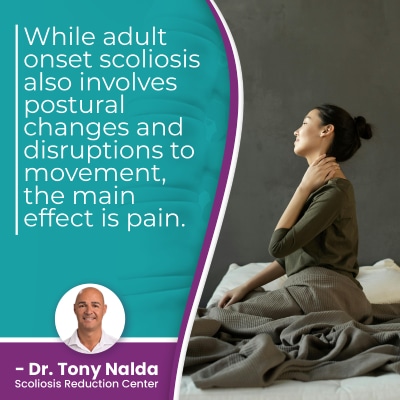 Degenerative scoliosis affects older adults commonly over the age of 50, and females are more commonly diagnosed than males; this is due to changes in bone density and hormones related to menopause.
Degenerative scoliosis affects older adults commonly over the age of 50, and females are more commonly diagnosed than males; this is due to changes in bone density and hormones related to menopause.
Degenerative scoliosis is caused by natural age-related spinal degeneration, and as progression occurs, the spine will become increasingly unbalanced and unstable, making this condition type particularly painful.
No one wants to experience pain, but it does serve a purpose of indicating something is wrong with the body, and the lack of pain in childhood scoliosis is a barrier to early detection, hence the importance of recognizing the early signs of scoliosis.
Benefits of Early Detection
The benefits of early detection are many, but they are only available to patients who commit to a proactive conservative treatment approach.
When it comes to addressing an unnatural spinal curvature, scoliosis treatment has different approaches; traditional treatment tends to funnel patients towards spinal fusion surgery while modern conservative treatment offers a non surgical treatment alternative.
Avoiding Spinal Surgery
Scoliosis surgery is invasive, and a major benefit of early detection is that it can mean preventing progression, increasing condition severity and effects, and avoiding a surgical recommendation in the future.
Spinal fusion can straighten a bent spine, but it can also leave the spine stiff, less flexible, with a reduced range of motion, increased pain at the fusion site, and a spine that's fused is weaker and more vulnerable to injury.
Higher Likelihood of Treatment Success
Treatment options are more effective the sooner they are started. Scoliosis is easier to treat the milder it is, so if early detection is achieved, this means a condition is diagnosed while still mild, when it's likely to be highly responsive to chiropractic care, physical therapy, corrective bracing, and scoliosis-specific exercises.
An abnormal curve that's progressive always needs treatment because the more curve progression there is, the more severe the condition, and the more noticeable its symptoms will become, making the condition more difficult to treat.
Progression makes the spine more rigid and less responsive, and the longer postural changes are in place, the harder they are to improve/reverse.
In most cases of scoliosis, it's more effective to proactively work towards preventing increasing condition effects than it is to attempt to reverse postural changes once they're established.
So the benefit of knowing the condition's early signs is that it can lead to early diagnosis, early intervention, and treatment success.
Conclusion
In addition to knowing the condition's early signs to watch for, there are also scoliosis risk factors that can indicate the need for routine screening: age, gender, and a family history.
An unnatural sideways curvature of the spine is most noticeable when bending forward, so this is a good way to regularly check a child for any postural changes or trunk asymmetries, but nothing can replace a scoliosis screening exam conducted by a medical professional.
And a scoliosis X-ray is needed to officially diagnose the condition by confirming the rotational component and a patient's Cobb angle measurement.
A treatment plan that's proactive is one that's started immediately following a diagnosis, and while there are never treatment guarantees, most children and adults can benefit from starting treatment early in a condition's progressive line.
If scoliosis is left untreated, related complications can develop including breathing problems (difficulty breathing), nerve damage, muscle spasms, and digestive issues.
There are also the emotional effects of living with a progressive spinal condition to consider, and this can include negative self image, body issues, and feeling self conscious.
While we don't always know the cause of scoliosis, what we do know is that early detection is highly beneficial when it comes to treatment efficacy, and we know that scoliosis can be highly treatable and responsive to a number of non surgical treatment options.
Dr. Tony Nalda
DOCTOR OF CHIROPRACTIC
After receiving an undergraduate degree in psychology and his Doctorate of Chiropractic from Life University, Dr. Nalda settled in Celebration, Florida and proceeded to build one of Central Florida’s most successful chiropractic clinics.
His experience with patients suffering from scoliosis, and the confusion and frustration they faced, led him to seek a specialty in scoliosis care. In 2006 he completed his Intensive Care Certification from CLEAR Institute, a leading scoliosis educational and certification center.
About Dr. Tony Nalda
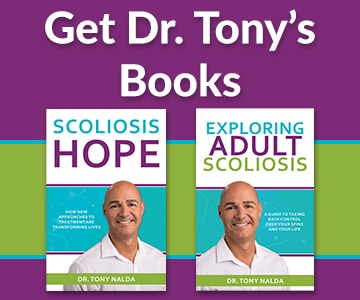 Ready to explore scoliosis treatment? Contact Us Now
Ready to explore scoliosis treatment? Contact Us Now